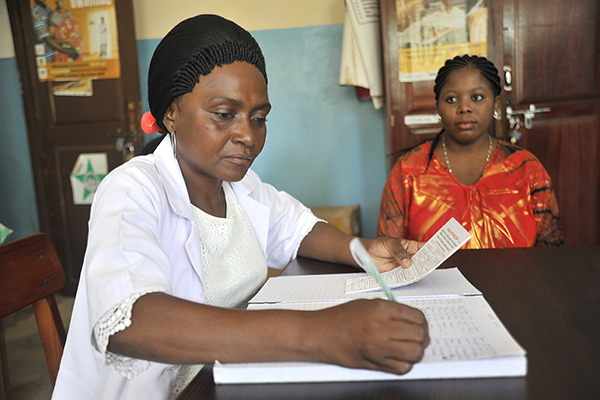The objective of this step is to conduct a coordinated set of activities as described in your strategy, making adjustments according to data and audience feedback.
There are two parts to this step:
- Get your message out as widely as possible to your intended audiences.
- Collect and use information to make adjustments.
Get Your Message Out
Once all materials have been produced, begin implementing the activities outlined in the communication strategy. It is very helpful to meet with a stakeholders group to agree on a schedule for activities and assign responsibilities. Activities may include:
- Orienting key officials, partners, media representatives and health workers to the campaign and the issue, and enlisting their support. (See advocacy fact sheet.)
- Training mobilizers or resource persons (see sample training materials for community volunteers in Nigeria.)
- Orienting pharmacists and medicine vendors (See sample orientation materials for medicine vendors in Nigeria.)
- Disseminating media messages. This begins with identifying the broadcast channels that will reach a large proportion of your intended audience, and are trusted sources of information. You can refer to commercial media surveys or health communication surveys to identify these channels. Often, communicators contract media placement agencies to put together broadcast schedules for radio, television and/or mobile media, and broadcast according to the agreed upon schedule.
- Distributing print materials. Even before printing materials, you should decide how you will distribute them to their intended audiences. Your distribution plan will dictate the numbers of copies to produce. The closer you can get SBCC materials to their intended audiences, the better. All too often, SBCC officers distribute materials to health facilities or district headquarters, where they sit in bundles, never reaching the men and women they were intended for. It is also important to consider distributing materials where people will be most likely to act on your messages. For example, when distributing posters that expain how to check a packet of ACTs for authenticity, people are most likely to use that information at places where they purchase ACTs, like pharmacies or drug shops.
- Holding periodic review meetings with the advisory group and implementers. During these meetings, you can learn about challenges and successes from implementers, review monitoring data and adjust plans as necessary.
Collect and Use Information to Make Adjustments
 Routinely collecting information helps you know whether or not activities are taking place as planned, how many people are being reached and, ideally, what effects your activities and materials are having on audience behavior. It is best to put together a monitoring plan when you design the communication strategy. This plan describes the information that will be routinely collected, how it will be collected, by whom and how frequently. For more detailed instructions concerning this, see How to Develop Monitoring Indicators and How to Develop a Monitoring and Evaluation Plan.
Routinely collecting information helps you know whether or not activities are taking place as planned, how many people are being reached and, ideally, what effects your activities and materials are having on audience behavior. It is best to put together a monitoring plan when you design the communication strategy. This plan describes the information that will be routinely collected, how it will be collected, by whom and how frequently. For more detailed instructions concerning this, see How to Develop Monitoring Indicators and How to Develop a Monitoring and Evaluation Plan.
For SSFFC malaria medicines SBCC campaigns, you will want to collect the following types of output information routinely:
- The number and timing of media broadcasts
- The number of print materials distributed and where
- The number of drug sellers, journalists and community volunteers trained
- The number of people attending community based or group activities
- Pre- and post-training evaluation scores
- The number of published newspaper articles about SSFFC malaria medicines
- The number and content of listeners’ calls and/or text messages during radio or TV programs
- Number of MAS texts sent, and the proportion of medicine sales this represents
- Number of calls to Make a Difference (MAD) hotline or other relevant hotlines
With your monitoring plan in place, you will need to establish a system and tools for collecting, compiling, analyzing and sharing the monitoring data. Tools may be paper-based, web-based, computer or mobile-phone based. Regardless of the level of technology involved, you will need to develop guidelines and train all people responsible for capturing and reporting data. You will also need to supervise the monitoring system carefully to ensure that you get useful and accurate data in a timely manner.



No Comments